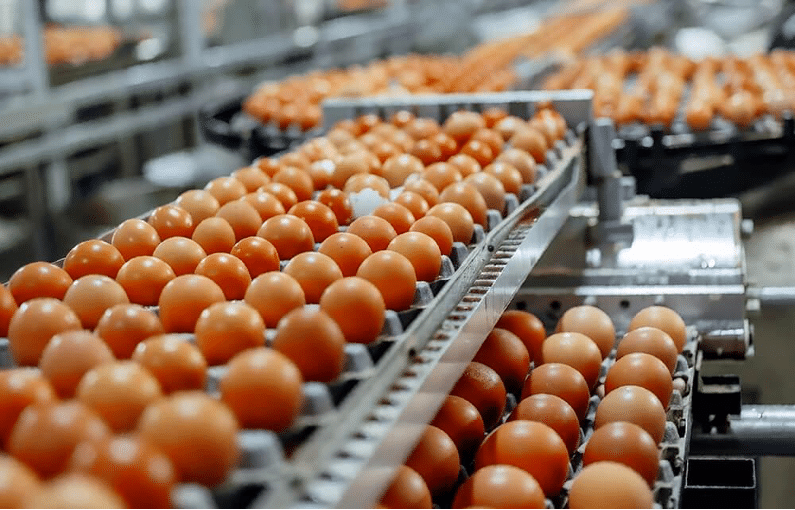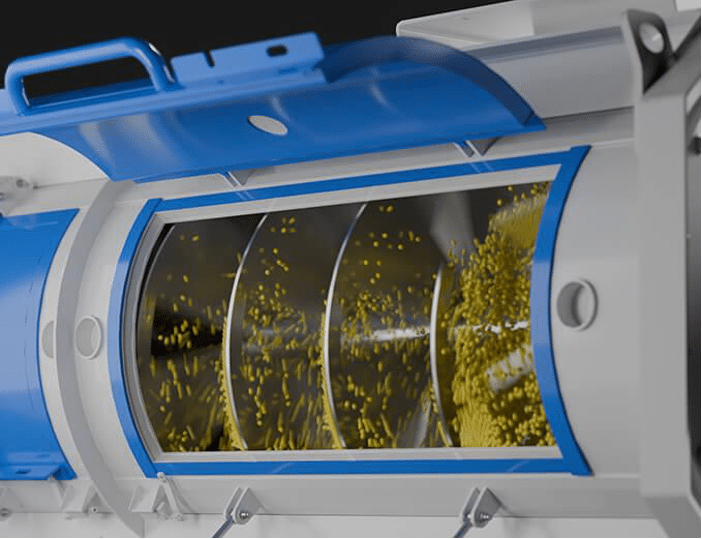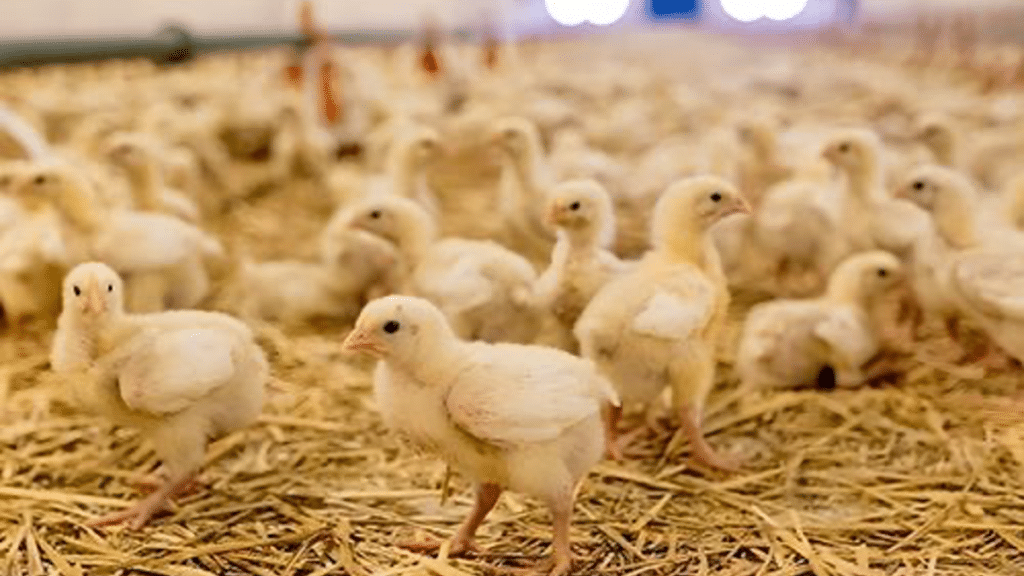Proper nutrition is key to keeping poultry healthy, productive, and thriving. Whether raising chickens for eggs, meat, or as pets, the right feed plays a major role in their growth and well-being.
But what do chickens eat? What are the different types of chicken feed? Dive into this blog to learn more!
What Are the Different Types of Chicken Feed?
From commercial mixes to alternative options, there are various types of chicken feed to fit the special needs of different flocks. Here’s an overview of the most common chicken food types.
1. Commercial Feeds
Commercial feeds are pre-formulated blends aimed at fulfilling the nutritional requirements of chickens throughout different life stages or for particular objectives.
Starter/Grower Feed
- Features: High protein content to support the growth of chicks.
- Best for: Chicks up to eight weeks old.
- Purpose: Helps young birds develop strong bones, healthy feathers, and robust immune systems.
Layer Feed
- Features: High calcium levels to support eggshell development and well-balanced nutrients.
- Best for: Egg-laying hens.
- Purpose: The best chicken feed for laying hens provides essential nutrients to boost egg production and maintain hen health.
Broiler Feed
- Features: Protein-rich and calorie-dense blend to promote rapid growth.
- Best for: Broilers.
- Purpose: Maximizes weight gain while ensuring meat quality.
All-Flock or Maintenance Feed
- Features: Lower protein but balanced for general flocks, including roosters, mixed breeds, and non-laying hens.
- Best for: Mixed backyard flocks.
- Purpose: An all-purpose option for maintaining overall health.
2. Alternative and Supplemental Feeds
For those looking to supplement or customize their chickens’ diet, alternative types of chicken feed ensure versatility.
Scratch Grains
- Features: A mix of grains like corn, barley, and oats—low in nutrients but highly palatable.
- Best for: Treats or energy boosts in cold weather.
- Purpose: Encourages natural foraging behaviors, but should only be a small part of the diet.
Pellets vs. Crumbles vs. Mash
- Features: Pellets are compressed feed that reduces waste; crumbles are coarsely ground pellets that are easier to eat, particularly for chicks; and mash is uniformly mixed powdery feed often used for mixing with water for reducing dust emissions.
- Best for: Varies depending on the flock’s preferences or life stage.
- Purpose: Offers flexibility to match chickens’feeding habits.
Organic/Non-GMO Feed
- Features: Free from synthetic additives, pesticides, and genetically modified organisms.
- Best for: Households seeking organic eggs or meat.
- Purpose: Prioritizes environmentally friendly and chemical-free farming.
Fermented Feed
- Features: Feed soaked in water, resulting in a probiotic-rich option that boosts gut health.
- Best for: All flocks, particularly those with digestive issues.
- Purpose: Improves nutrient absorption and reduces feed waste.

Which Chicken Feed Is Best?
Choosing the types of chicken feed depends on several factors, from the flock’s purpose to their specific health needs:
1. Age and Life Stages
The chickens’ age is the most important factor when deciding on the types of chicken feed:
Chicks (0-8 weeks): Stick to high-protein starter feed to support their rapid growth.
Egg layers (over 20 weeks): Opt for layer feed to meet their calcium needs.
Meat birds (broilers): Broiler feed ensures healthy weight gain.
2. Purpose
The reason one is raising chickens will influence the dietary needs. For instance:
Egg production: Focuses on layer feed with added calcium to improve eggshell quality.
Meat production: High-protein broiler feed speeds up growth for plump, healthy meat birds.
Backyard pets: All-flock or maintenance feed provides the balanced nutrition they need without being specialized.
3. Health Requirements
Tailor the feed to address specific health considerations:
Allergies or sensitivities: Organic or non-GMO feed may be suitable for flocks with dietary restrictions.
Digestive issues: Fermented feed helps maintain a healthy gut microbiome.
Molting or recovery: Higher-protein feed can help support post-illness recovery or regrowth during molting.

FAMSUN’s Innovative Chicken Feed Solutions
High-quality feed comes from advanced feed processing. With the commission to become a leading agriculture & animal husbandry solution provider, FAMSUN delivers advanced feed processing solutions tailored for both broiler and layer feed production.
Their integrated systems ensure precise formulation, consistent quality, and efficient production, supporting poultry farms in delivering optimal nutrition for different growth stages:
- Precision grinding reduces fine particles, boosting digestibility for rapid growth.
- Low-residue mixing guarantees formula consistency across batches.
- Customized heat treatment eliminates pathogens while preserving nutrient integrity.
- Multi-deck cooling prevents moisture buildup, extending shelf life during storage.
FAMSUN’s cutting-edge technology helps feed producers and poultry farms achieve superior efficiency, nutritional consistency, and cost-effectiveness, enabling businesses to meet the specific dietary needs of poultry while maintaining high industry standards.
Conclusion
Understanding what feed to feed chickens and the types of chicken feed is essential for their health, productivity, and longevity.
Whether raising chickens for eggs, meat, or backyard joy, selecting high-quality, tailored feed will make all the difference. FAMSUN provides trusted feed solutions for expert-backed, efficient options tailored to different flocks’ needs. Visit FAMSUN’s website to explore more poultry feed solutions!
